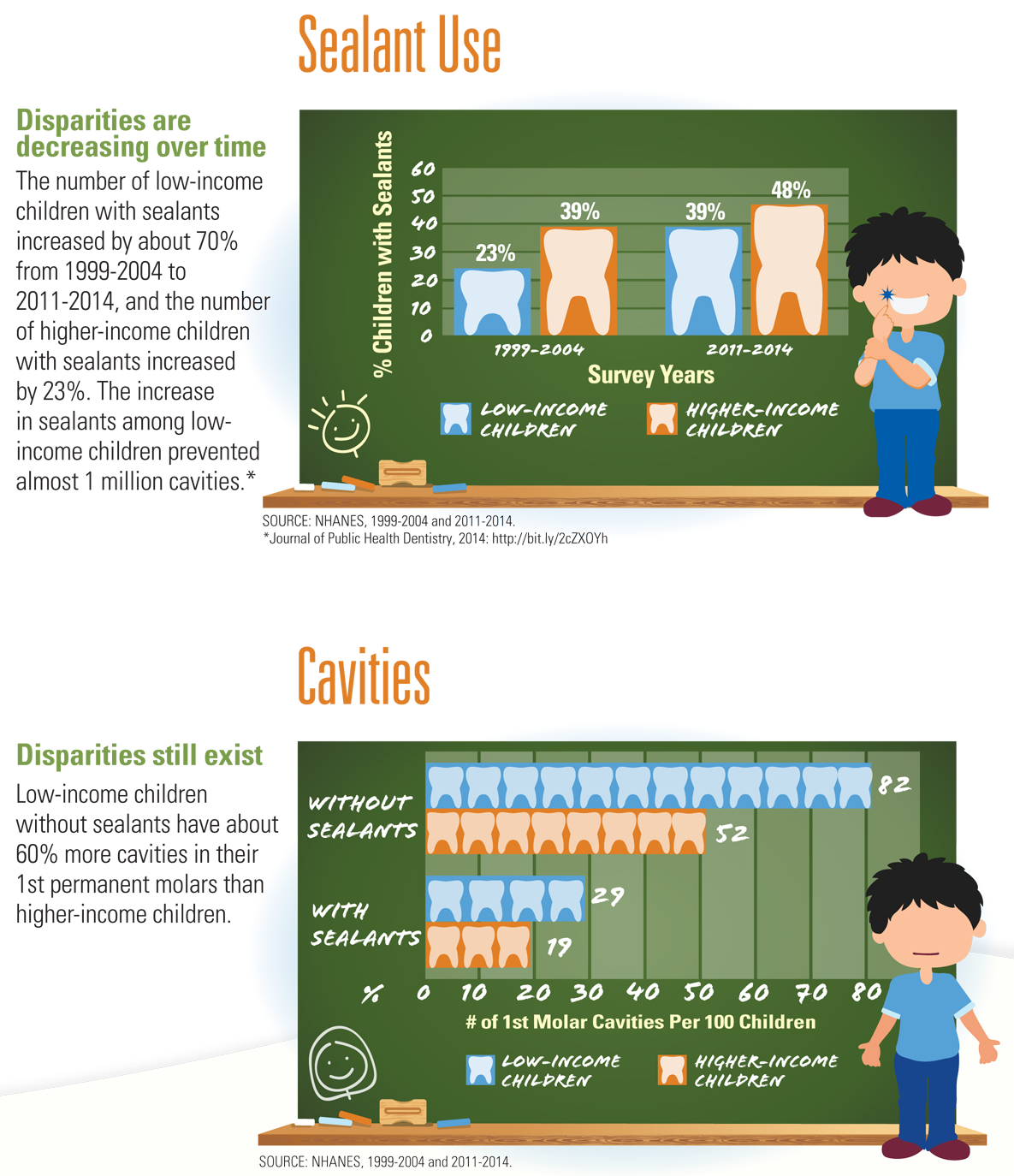Vital Signs: Dental Sealants Prevent Cavities
Effective protection for children

This infographic shows a dental care professional with protective eyewear, mask, gown, and gloves placing a small dental mirror in a child’s mouth to view his teeth. Graphic images of a tooth without sealant, tooth with the sealant applied and the tooth with final sealant are shown:
Dental sealants can prevent cavities when applied to molar teeth.
- Tooth without sealant
- Sealant is applied
- Tooth with final sealant
School-based programs are one way to reach millions of children with sealants to prevent cavities.

This infographic shows a chart with the percentage of children with sealants for the 1999-2004 and 2011-2014 survey years:
School-based sealant programs are effective but underused.
Sealant Use
Disparities are decreasing over time
The number of low-income children with sealants increased by about 70% from 1999-2004 to 2011-2014, and the number of higher-income children with sealants increased by 23%. The increase in sealants among low-income children prevented almost 1 million cavities.*
| % of Children with Sealants | Low-Income/High-Income Children | Survey Years |
| 23 | low-income | 1999-2004 |
| 39 | higher-income | 1999-2004 |
| 39 | low-income | 2011-2014 |
| 48 | higher-income | 2011-2014 |
SOURCE: NHANES, 1999-2004 and 2011-2014.
*Journal of Public Health Dentistry, 2014: http://bit.ly/2cZXOYh
This infographic shows the percentage of low-income and higher-income children with and without sealants who get cavities:
Cavities
Disparities still exist
Low-income children without sealants have about 60% more cavities in their 1st permanent molars than higher-income children.
| # of 1st Molar Cavities Per 100 Children | Children With/Without Sealants | Low-Income/Higher-Income Children |
| 82 | Without sealants | Low-income |
| 52 | Without sealants | Higher-income |
| 29 | With sealants | Low-income |
| 19 | With sealants | Higher-income |
SOURCE: NHANES, 1999-2004 and 2011-2014.
